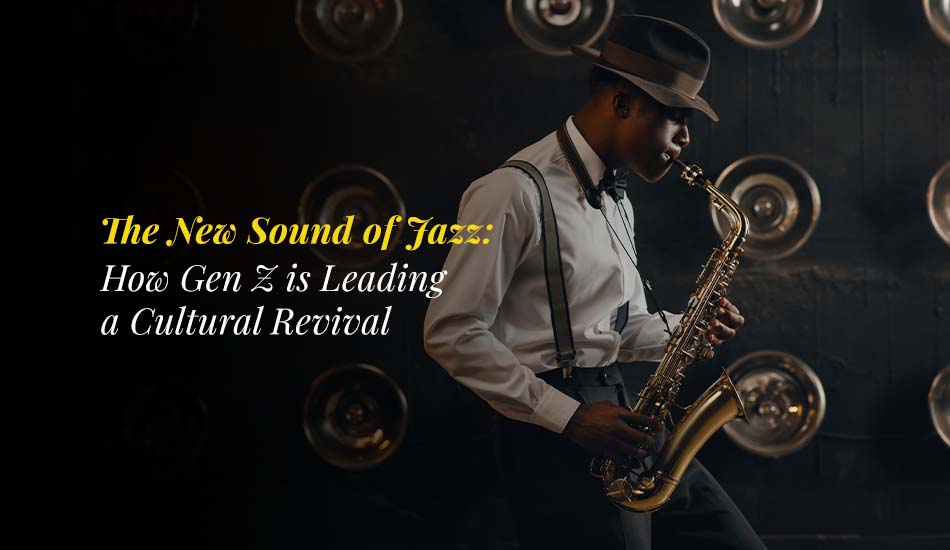
by dynamite | May 22, 2025 | Blog
For years, jazz had the epithet of being “timeless,” a term not unflattering but sometimes interpreted as a way of minoritizing it as a music of yesteryear rather than music of now. But a new generation of listeners is lending jazz new life today. The jazz revival will not only be outsourced; the jazz revival is here and doing great. Thanks to social media, digital platforms and young innovators, this generation is rediscovering jazz, and redefining it, for the 21st century.
Jazz’s History and Development
Jazz has long been a moving target. Jazz, which emerged out of a mixture of African American blues, ragtime and European classical music, has been revitalized so many times — from swing and bebop to fusion and avant-garde. The music was traditionally the music of rebellion, the music of improvisation, the music of deep cultural commentary. After decades in which jazz largely took a backseat to rock, pop and hip-hop, the revival of jazz among Gen Z is evidence of just how vibrant jazz’s building blocks.
Gen Z’s Jazz Revival, Through Voices Like Samara Joy
Vocalist Samara Joy is one of the most impressive voices in Gen Z’s jazz revival. Compelling tone, classic phrasing: She’s been compared to legends like Ella Fitzgerald and Sarah Vaughan, although she brings a contemporary sensibility that resonates with younger audiences. Her triumph on platforms such as TikTok and Instagram has exposed younger, digitally native listeners to traditional jazz singing, affirming that the standards still count especially when performed by new voices.
Joy’s broad appeal can be found in her authenticity. She’s not attempting to update jazz by pushing it into another genre. Instead, she features its emotional depth and timeless beauty, which would befit any era in jazz, and she is one of the most exciting new voices in jazz singing.
Jazz Going Global Online, and You Can Be Part of It
Services like Soundcloud, low-fi and short-form video platforms like TikTok, and digital radio have all played a role in putting jazz back into the ears of Gen Z. We live in an age when Spotify, YouTube and TikTok have joined jazz clubs as places to dive into sounds that are new at least to you, and discovery is increasingly a consequence of algorithms and user-generated content. Jazz is now being slipped next to lo-fi, R&B and indie pop in curated playlists, a kind of background radiation that’s letting in jazz to new, younger listeners.
Even more important, younger listeners are playing this music now. They’re not just consuming jazz, they’re playing it, remixing it and talking about it online. Now, jazz isn’t just a museum piece, it’s part of a living digital culture.
Laufey’s Return Has Fueled a New Jazz Economy
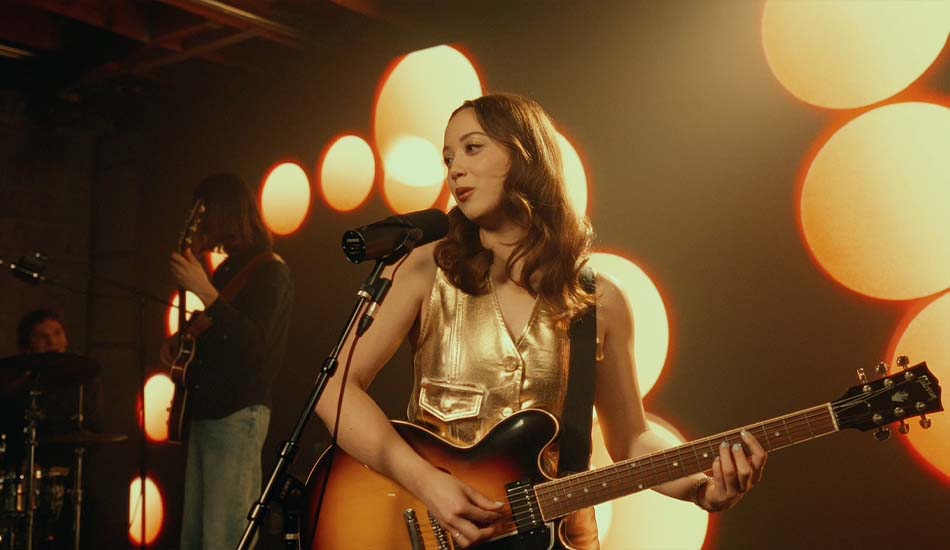
Among the standouts in this new wave is Laufey, an Icelandic-Chinese singer-songwriter who intersects jazz with pop, classical and indie sensibilities. Her sophisticated songwriting and ethereal vocals have struck a chord with Gen Z listeners looking for emotional heft and musical sophistication.
What’s most appealing about Laufey is the way she makes jazz feel within reach. Her melodies have a jazz-harmonic grounding, but they possess the vulnerability and directness that draw in a younger listener. Her albums not only ruled streaming charts, but they have introduced an entirely new generation to a number of the greatest jazz records of the past, as fans of her sound also seek to uncover its origins.
Reimagining Jazz’s Identity
But as with Indigo and her peers, Gen Z isn’t only bringing jazz back to life, they’re also reimagining what it is, to begin with. Freed from purist pressure, young musicians are fusing jazz with soul trap, electronic music and video game soundtracks. It’s this genre elasticity that also means jazz can move and change without losing those key tenets of improvisation, emotional complexity, and harmonic diversity.
That redefinition is particularly pronounced in the way that Gen Z musicians analyze performance and image. Instead of suits and smoky clubs, it’s minimal fashion, social media transparency and DIY ethos. Jazz is more personal, less performative, and more community-driven than gatekept.
Social Media and Jazz Education
In earlier times, if you wanted to learn jazz, you had to have a connection to a conservatory, be able to take private lessons or afford high-priced recordings. In today’s world, YouTube, TikTok and Instagram have democratized jazz education. Now, Gen Z musicians can learn everything from bebop scales to Miles Davis theory breakdowns from creators around the world.
This e-learning culture is also slapping a myth: the myth that jazz is “too complicated” or “too for the experts.” As creators streamline complicated theory and jazz starts to feel fun, new players and listeners are entering the conversation with eager curiosity.
The Video Game and Pop Culture Connection in Jazz
Jazz is also showing up unexpectedly in the favorite cultural haunts of Gen Z. Video games like Cuphead and Persona 5 have featured jazz-inspired scores that have been iconic for younger players. Other cultural phenomena, such as La La Land (and, for that matter, film scores for superhero movies), have reinvigorated retro horn sections and jazz-fusion breaks in popular entertainment.
This visibility is crucial for normalization. When jazz is integrated into the greater cultural wallpaper, are members of a younger generation more likely to embrace it, and spend time with it?
Conclusion: A Genre Reborn
So Gen Z’s jazz revival is not just a fad, it’s a cultural trend. By both respecting tradition and welcoming the bright and shiny new, young listeners and musicians are giving jazz a new voice for today. With ascenting stars like Samara Joy, and Laufey, the power of digital platforms, jazz is no longer backward-looking. It is dragging itself into that future boldly, creatively and unapologetically.
But jazz is not dying, and with each new generation that unearths the legacies behind the greatest jazz albums yet champions its own heroes among today’s modern jazz singers, one thing’s for sure: Jazz is not going away. It’s turning up the volume.
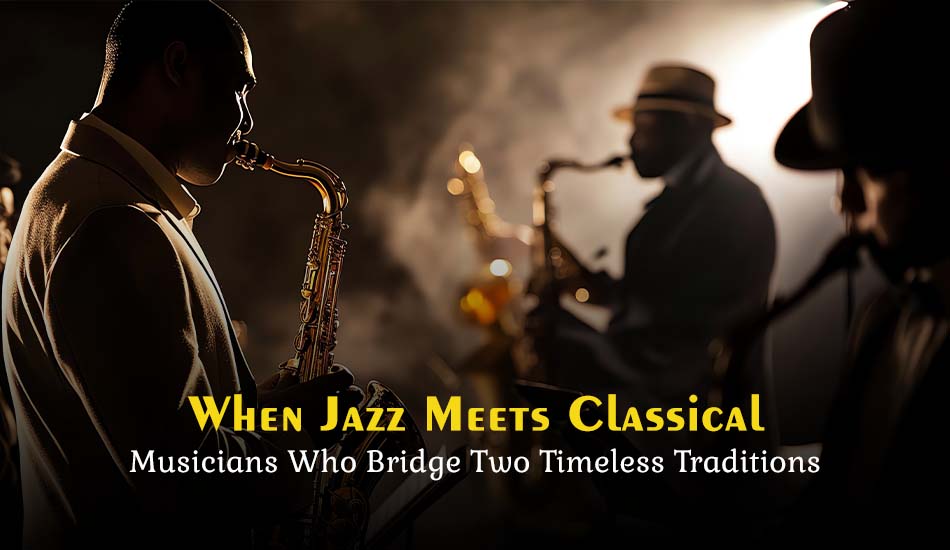
by dynamite | May 21, 2025 | Blog
Although the borders between jazz and classical music might look well defined, some of the greatest jazz musicians in history have played so freely, so defensively, as to create inspired work that exists somewhere in between. Indeed, the rich history of jazz that’s enhanced by the influence of classical music is some of the most imaginative, expressive , and structurally sophisticated ever recorded. Classical music has been an elemental influence from the start of jazz, from harmonic practice to depth of feeling.
A Brief Historical Context
Jazz and classical music might on the surface seem to be very divergent fields, but they’ve intersected often over the past century. Where jazz was born in African American communities in the early 20th century, built on the foundations of the blues and ragtime, classical music comes with centuries of European tradition in its past. As jazz musicians hopped it up a bit, and extended its sonic range, many of them found their inspiration in the form of classical compositions and its techniques.
Composers as different as George Gershwin, who melded classical structure with jazz harmonies in “Rhapsody in Blue,” and Duke Ellington, who wrote extended orchestral pieces, served as bridges between jazz and classical. This historical twine helped create jazz musicians for generations who’ve taken new ideas and worked them through classical forms.
Technical Influences - Harmony, Form & Orchestration
What is one of the progression between jazz and classical is probably the more harmonic language. Jazz pianists and composers learned from classical music, encountering extended chords, modulations, and counterpoint. It is especially difficult for composers and arrangers in big band and post-bop traditions. Sonata form, fugue motif development, and all classical techniques may be heard in countless jazz tunes.
Moreover, classical instruments and orchestration in jazz recordings are becoming more prevalent. Think about the colors you hear in the arrangements that Gil Evans wrote for Miles Davis’ record Sketches of Spain, which is a great example of classical influence in tone quality and dynamics.
Famous Jazz Musicians Who Have Been Inspired By Classical Music
Some of the best jazz recordings betray a distinctly classical influence. The pianist Bill Evans had, for example, extensively studied classical music and would bring an impressionistic, Debussy-like sensitivity to jazz harmony. A large ensemble composer, Charles Mingus, too, used classical forms and themes in his works.
Wynton Marsalis is another who has excelled in both classical and jazz performance on the trumpet and has played a major role in both realms. Contemporary jazz singers like Esperanza Spalding also tap into classical chamber textures and compositional depth in their own recordings.
Educational Outlook: Teaching Meets Innovation
A lot of jazz musicians today are educated in conservatories and universities where jazz and classical music are taught. This educational base gives you a more intense integration of musical theory, composition and practice.
This two-pronged training provides today’s jazz musicians with a more expansive toolkit to play around with. It also encourages you to appreciate the architecture behind music, something that is deeply rooted in classical traditions. Consequently, jazz improvisation is refined through the knowledge of the classical master.
Case studies in Classical music influenced jazz
There are some seminal works and collaborations that serve as touchstones for this intermingling.
- The careers of Jacques Loussier’s Play Bach Trio and similar ensembles helped stir Bach into a jazz head and released him alive from a classical formaldehyde.
- Jazz mixed with Baroque counterpoint and the grace of chamber music was the hallmark of the Modern Jazz Quartet, led by pianist John Lewis.
- Modern pianist Brad Mehldau is known for his use of classical material and phrasing and lists Brahms and Schubert as influences on his improvisation.
These examples reveal that jazz inspired by classical music is not a niche; it’s a vast, living tradition.
Cross-fertilizations and Interdisciplinary Work in Recent Times
Jazz’s proximity to so-called serious contemporary music is as evident today as ever. Hybrid compositions are played in jazz festivals with chamber ensembles and soloists. String quartets are playing alongside jazz combos, and orchestral commissions for jazz composers are increasingly the norm.
This synthesis has led to some amazing crossover projects as well. As an example, one could point to pianist Dan Tepfer’s Goldberg Variations. Variations which juxtapose Bach’s original masterwork with jazz improvisations on each of its movements. And those projects are great examples of the back-and-forth between genres.
Cultural and Social Contexts for Jazz-Classical Fusion
The free interplay of culture has long been the driving force behind musical breakthroughs. Jazz is a product of a particular social reality, and the combination with serious music points to a wish to overcome limitations. It is more than often a matter of choice, it’s more than often not a choice, but something stronger – a statement of artistic and even cultural identity.
In a reality that seems to prize tradition even as it searches for transformation, marrying jazz and classical becomes a way for artists to honor the past while finding new ways for the genre to move. This is particularly so for contemporary jazz vocalists who wish to paint richer stories with a broader musical palette.
The Emotional Vocabulary: How Classical Sensibility Enriches Jazz Expression
Classical music lends an enormous wealth of emotional nuance, structure and restraint, those qualities that can expand the expressive language of jazz. For vocalists, reaching back to classical phrasing and breath control opens up more textured, emotionally rich performances.
In combining the freedom of jazz with the restrictions of classical music, musicians open up new worlds. Such an expanded emotional lexicon enables listeners to approach music in a deeper, more durable way.
Conclusion
Jazz inspired by classical music remains one of the most innovative and emotionally rewarding paths in contemporary music. From harmonic obscurity to compositional beauty, this marriage brings new life to both genres and forces artists not to rest on their laurels. Whether via paradigm-shifting instrumental works or the vivid narrations of modern jazz singers, the collision of jazz and classical remains a force to be harnessed in the sound of now.
Whether you are delving into the greatest jazz albums or are searching for new inspiration, look to the place where classical music and jazz converge. It’s where the past dances with the present and where the future of music keeps changing.
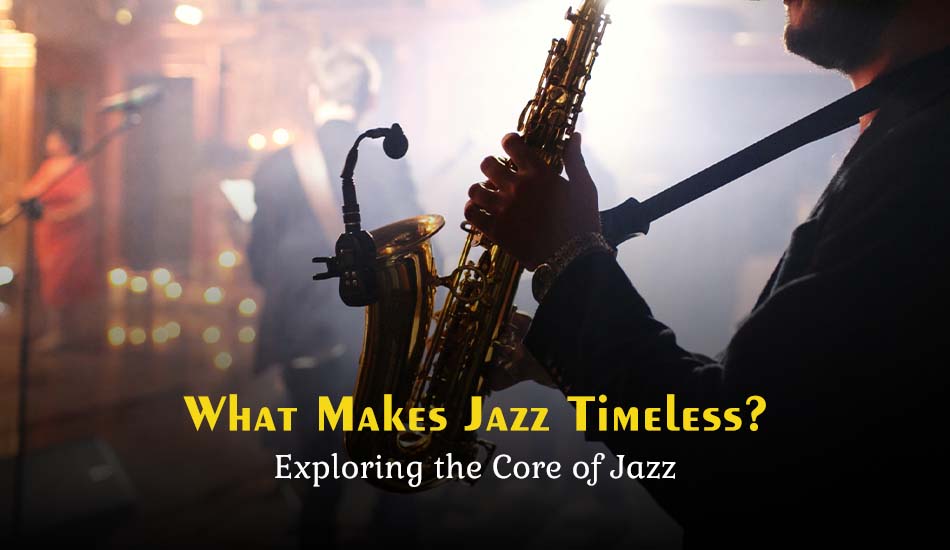
by dynamite | Apr 28, 2025 | Blog
Jazz isn’t something you just listen to, it’s something that listens to you, it’s a living, breathing art form that speaks your life. Embedded within history and culture the fundamental components of Jazz has shaped the sound of music across the globe. Jazz is a spirit of improvisation, a culture, a history.
1. Jazz Improvization: The Heart of Creativity
Of the ingredients of jazz, that which lies at the centre is improvisation. Whereas a lot of different types of music depend on players hitting the right notes, jazz players find inspiration in the opposite. Each performance is a new conversation among instruments, with players turning one another’s ideas upside down. Improvisation is a terrific way to highlight the technical and expressive aspects of a musician and create music that sounds alive and of the moment.
2. The Cultural Life of the African South in the American South
The origins of jazz are found in the region of mostly African American workers in the American South. African rhythms, melodies, and collective music-making shaped the creation of jazz from the earliest moments. Enslaved Africans introduced vibrant musical traditions to America, which were mixed with European musical styles to produce an entirely new medium of expression.
3. Beginnings of Jazz: The Emergence of a New Music
Jazz had an early beginning in the city of New Orleans, Louisiana. Ragtime (Joplin), blues, and spirituals came together in the first distinct incarnations of jazz. Pioneer early jazz singer legends, Bessie Smith and Louis Armstrong, paved the way for future generations, transforming raw feeling and spontaneous creation into timeless jazz music songs that resound in the current day.
4. How Jazz Permutations Travel Around the Globe: From New Orleans to the World
As jazz spread out of New Orleans, it soaked up ideas from each town it visited. Chicago heralded a more organized, ensemble-based jazz, and New York became a mecca for big band and swing. On the other hand, West Coast jazz grew in the direction of a cooler, softer sound. This regional evolution points to the adaptive power and cultural roots of jazz’s elements.
5. Crafting the Jazz Discourse: Reinvention and Expansion
Never before has the latter era of jazz been left with this: Artists stretching the limits of your expectations. Innovators like Miles Davis and John Coltrane reimagined those templates, exploring modal jazz, fusion, and avant-garde methods, and turning them inside out. Jazz artists today still experiment and blend jazz with rap, R&B even electronic music. This flexibility has allowed jazz to always feel new and relevant through the generations.
6. The Use of Call and Expressive Response in Jazz
Call and response is a highly identifiable feature of jazz. Originating from African musical systems, the practice of call and response is a form of musical “dialogue” in which one musician – or group of musicians – presents a phrase to which another musician or group of musicians replies. It’s a bedrock practice of jazz improvisation, a means of communication and connection among musicians and between them and an assembled audience.
7. Jazz is More Than Technique: Emotion, Freedom, and Storytelling
And so, even though jazz requires technical acumen, it is music with emotion and storytelling at its heart. It’s fair to say that every great jazz vocalist or horn player realizes that technique is a rudimentary apparatus to communicate something immeasurably more profound: human experience. Jazz has a way of capturing joy, heartache, hardship, and victory with an immediacy few other musical styles can rival. It’s this emotional core that takes jazz to another level beyond mere notes and rhythms.
Conclusion
Getting to the essence of jazz means respecting the complex weave of history, culture, passion, and innovation that goes into every note. From the sounds of early New Orleans to the groundbreaking beginnings of radio, it seems that the elements of jazz have evolved to constantly serve as a leitmotif against the backdrop of the nation’s history. Whether you’re exploring jazz music songs from the big band swindlers of the 1930s or a new favorite jazz singer, there’s art and soul in every melody and harmony in jazz, which is why it still keeps audiences coming back for more.

by dynamite | Apr 23, 2025 | Blog
Jazz has long been one of America’s greatest cultural exports. Just the same, it’s longtime innovation, emotional depth, and sophisticated musicality has made it a lasting influence over innumerable genres — most particularly, today’s Pop and R&B. These modern genres have evolved to suit the tastes and technologies of their eras, but the influence of jazz is still too deep a part of their DNA.
In this blog, we delve into the deep jazz influence on R&B and Pop, exploring its roots, evolution, and its future.
Jazz and Its Origins: The Building Blocks of Sound
Emerging in the early 1900s, jazz took its inspiration from blues, ragtime, and African rhythms to produce the new, emotion-laden sound. Artists such as Louis Armstrong, Duke Ellington, and Billie Holiday paved the way with complex melodies, rhythmic swing, and improvisational virtuosity. These 1960s trailblazers not only impacted jazz directly, they also paved the way for jazz’s influence on the genres that would follow it, especially soul, funk, R&B, and Pop later.
Using Jazz Elements in Modern Pop Production
Pop music today is characterized by electronic beats and catchy hooks, but many hits subtly feature jazz influences. Everything from syncopated rhythms to extended chords and idiosyncratic instrumental voicings: producers borrow from jazz know-how to impart sophistication and nuance. And artists such as Bruno Mars, Ariana Grande, and John Legend work jazzy chord changes and brass arrangements into their music, a testament to the genre’s timeless draw.
Jazz Meets R&B: The Soulful Evolution of Sound
The blending of jazz influence on R&B has produced some of the most highwire emotional music of our age.” You can see jazz’s influence on R&B particularly in the smooth vocal phrasing, lush harmonies and rhythmic fluidity of neo-soul and contemporary R&B. Artists such as Erykah Badu, D’Angelo and Robert Glasper adopted jazz’s improvisatory ethos and used it to offer deeply personal, groovy songs that resonate with listeners today.
Musical Trailblazers: 5 Early Jazz Artists Who Changed the Game
Legends such as Miles Davis, Herbie Hancock, Ella Fitzgerald and Nina Simone not only altered the course of jazz — they opened new doors for crossover appeal. Their exploration of form, style and genre paved the way for today’s artists to mix jazz with modern sounds. These artists are undoubtedly among the greatest jazz albums and best jazz vocalists of all time, inspiring new generations of performers and producers.
The Jazz Art of Improvisation and What Songwriters and Vocalists Can Do to Incorporate It
A major tenet of jazz is the art of improvisation, and this was foundational in the way modern vocalists and songwriters approached the creation of music. The spontaneous, emotional delivery visible in jazz singing has applied to modern R&B vocalists including H.E.R., Jazmine Sullivan and Daniel Caesar. Their knack for laying raw emotion — vocal runs and phrasing — onto a song’s bones traces directly to the customs of jazz improvisation.
Sampling Jazz: How It Helps Hip-Hop And R&B Songs Rule The Charts
Sampling became a key bridge between jazz and modern genres. Self-styled jazz diggers, hip-hop producers like J Dilla and Madlib regularly used hazy samples from the bygone genre to create beats that were as soulful as they were textured. Likewise, the likes of Kendrick Lamar and Anderson. Paak knit jazz loops into their R&B-adjacent grooves, producing something familiar, yet new and exciting. Such samples are often what expose younger audiences to jazz and provide the intergenerational bridge.
How Jazz Harmony Has Influenced Modern Chord Progressions in Pop
Jazz is a music known for its harmonically rich jungle with complex chords, modern harmonics and progressions. These harmonic hues are used more and more in Pop songwriting for a subtle emotional palette. Songs that draw from a jazz-imbued harmonic language tend to have a depth that allows musicians to create more nuanced, interesting stories.
Conclusion
Jazz has transitioned from its origins in African American communities to being a key feature of modern chart-topping hits. From improvisational techniques and harmonic complexity to emotional expression, the impact of jazz on the world of R&B and Pop is undeniable. With artists exploring and pushing boundaries in ways that blend genres, jazz tenaciously survives—rattling about the music of yesterday, today and tomorrow.
From the best jazz albums of all time to the best jazz singers of all time, one thing certainly stands out: jazz isn’t just a genre, it’s a living, breathing institution that has reverberated through the generations.
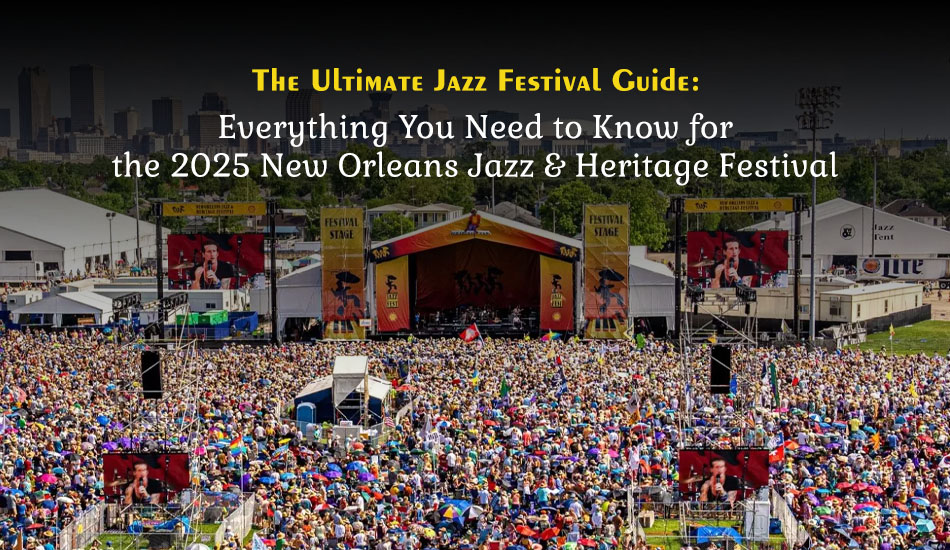
by dynamite | Mar 21, 2025 | Blog
For an unforgettable trip to the 2025 New Orleans Jazz & Heritage Festival, the Jazz Festival Guide is your one-stop for planning. An important part of the jazz world to visit, Jazz Fest is known as the most legendary event, often referred to as just Jazz Fest, which features world-class performances, mouthwatering food, and an overall wonderful cultural experience in the heart of New Orleans.
Jazz Fest possesses a rich history, a buzz about it, and a lineup of legendary artists proof that the event is among the most anticipated music events of the year. This guide for the fans is geared no matter if you are a first-time visitor or if you are a returning fan and will help you in navigating every obscurity associated with the festival, ticket purchases, where to stay, what to wear, what to bring and how to make the most of anything New Orleans has to offer.
What is Jazz Fest?
New Orleans Jazz & Heritage Festival is an annual festival featuring jazz, blues, gospel, R&B, rock, zydeco, Cajun, etc. Jazz Fest certainly isn’t just a music festival, and one of the things it’s a tribute to is the city’s rich cultural treasure, both those established stars and those emerging artists.
They’re now much more than a celebration of music: Jazz Fest is also a food, arts and crafts market, mouthwatering local cuisine, and cultural exhibits that celebrate the extraordinary heritage of New Orleans. The crowd will always be diverse, the atmosphere an electric one, and the lineup will always be a mix of classic jazz and contemporary classics.
The 2025 New Orleans Jazz & Heritage Festival Lineup
While the 2025 show hasn’t even made a lineup just yet, past Jazz Fest lineups have been jam-packed with all sorts of jazz legends, contemporary musicians and up and comers.
For years, Jazz Fest has seen the legends perform:
- Louis Armstrong Tribute Bands
- Wynton Marsalis
- Stevie Wonder
- Aretha Franklin
- Trombone Shorty & Orleans Avenue
This year will have one exciting music lineup like an American Jazz Singer from LA, a break through artist from the latest jazz album 2025, and beloved New Orleans musicians. We will be adding to this post as soon as the official lineup is released, usually in early 2025.
About Jazz Fest | 1970 – Today
In 1970 the Jazz Fest was created, as a small music event to pay tribute to New Orleans’s rich music culture. Through the years it has become one of the most prestigious jazz festivals in the world with attendance vacationing above 500,000 every year.
Jazz Fests uniqueness is that it is authentic and about legacy. Preserving and sharing the spirit of New Orleans has always been more than just some of the music at the festival. One of the city’s deep roots is reflected in Jazz Fest: from the legendary Preservation Hall Jazz Band to street performers and brass bands.
Tickets – When is the Best Time to Buy?
The Jazz Fest typically releases tickets several months before the event, and especially in the case of VIP and weekend passes, they sell out quickly. For those attending do you have these tips:
- Early Bird Tickets: Best prices, limited availability
- Single-Day Passes: Ideal for visitors with tight schedules
- Weekend Passes: Great for those who want to enjoy multiple days of music
- VIP Packages: Exclusive perks, premium seating, and backstage access
Don’t let anyone tell you that they are the only source of finding tickets, but rather buy your tickets as early as possible!
When Should I Book My Flight and Hotel for Jazz Fest?
If you’re going to New Orleans during Jazz Fest, you’ve got to book early because of the surge in visitors taking place. You want to reserve your flight as well as hotels for all months 4-6 in advance to get the lowest rates.
Best Areas to Stay in New Orleans for Jazz Fest:
- French Quarter: Close to nightlife and restaurant
- Garden District: A quieter, charming neighborhood
- Warehouse District: Trendy and modern hotels
- Mid-City: Conveniently located near the festival grounds
If you are a budget traveler, there are Airbnb, hostels, or guesthouses out of the main city area, especially if you don’t plan to go clubbing every night.
When Will the Jazz Fest Lineup Be Announced?
On the other hand, the official lineup always comes in January or February. The Jazz Fest website and social media pages are the places to stay up to date. Now is when you’ll learn if your favorite artists will be in town for an American jazz singer from LA or even hear songs from the latest jazz album 2025.
What’s the Best Way to Get Around During Jazz Fest?
- Walking: Many festival-goers choose to walk since the venue is close to the city center.
- Streetcars & Buses: Affordable public transportation options.
- Taxis & Ride-Sharing: Uber & Lyft are available, but prices may surge.
- Biking: A great way to navigate the city with available rental options.
Pro Tip: If you are not in the city center accommodation, book close to the public transit lines to avoid traffic jams.
What Should I Wear to Jazz Fest?
New Orleans weather can be hot and humid, so dressing comfortably is key:
- Lightweight, breathable clothing
- Comfortable shoes (expect to walk a lot)
- Sunglasses, hats, and sunscreen
- A small backpack or crossbody bag
What Should I Bring?
Essentials Checklist:
- Refillable water bottle
- Portable phone charger
- Cash & credit cards
- Poncho (for unexpected rain)
- Earplugs for loud concerts
What Kind of Food Can I Find at Jazz Fest?
Jazz Fest is famous for its food! You can expect a pleasing blend of the flavors of Cajun and Creole.
- Shrimp Po’ Boys: A New Orleans classic
- Jambalaya: A spicy rice dish with seafood or sausage
- Hurricanes & Daiquiris: Popular festival drinks
- Beignets: Powdered sugar-covered fried dough
Don’t forget to try local food favorites and go for a variety of food vendors at the festival.
What Accommodations Are Available for Patrons with Disabilities?
Jazz Fest is ADA-compliant and provides:
- Accessible seating areas
- Wheelchair rentals
- Designated transportation services
If you need special accommodations, contact the festival organizers in advance.
What Sustainability Measures is Jazz Fest Taking?
Jazz Fest has been actively reducing its environmental impact by:
- Using biodegradable utensils
- Promoting recycling & composting
- Encouraging visitors to bring reusable bottles
Help keep the festival eco-friendly by disposing of waste properly!
How Many Stages Are There, and What Can I Expect at Each Stage?
- Acura Stage: Main headliners and big acts
- Jazz Tent: Pure jazz performances
- Gospel Tent: Soulful gospel music
- Blues Tent: Traditional blues artists
Each stage offers a unique vibe, so explore them all!
What Should I Do During the Week in Between?
- Explore the French Quarter: Live music on Bourbon Street
- Visit the National WWII Museum: A must-see in New Orleans
- Take a Cocktail Tour: Try classic NOLA drinks
- Swamp & Plantation Tours: Discover Louisiana’s natural beauty
Final Thoughts
The Jazz Fest Guide is the most comprehensive and must-have source for your unforgettable Jazz Fest experience. This festival is definitely a must-visit for any jazz lovers. Whether you want to see an American jazz singer from LA or hear songs from the fresh, jazz album 2025, all that jazz, you really should consider going.
Book early, carry light, and set for an exciting jazz trip!






